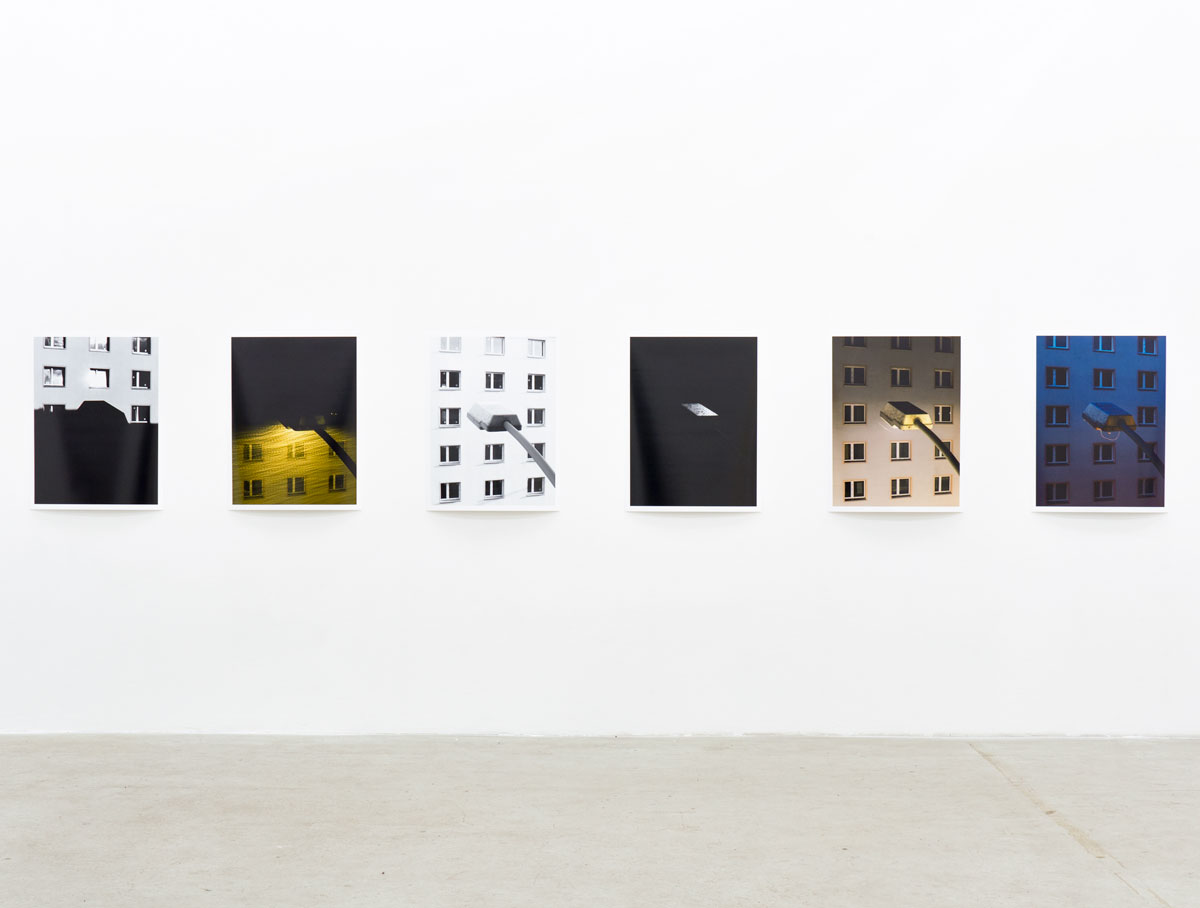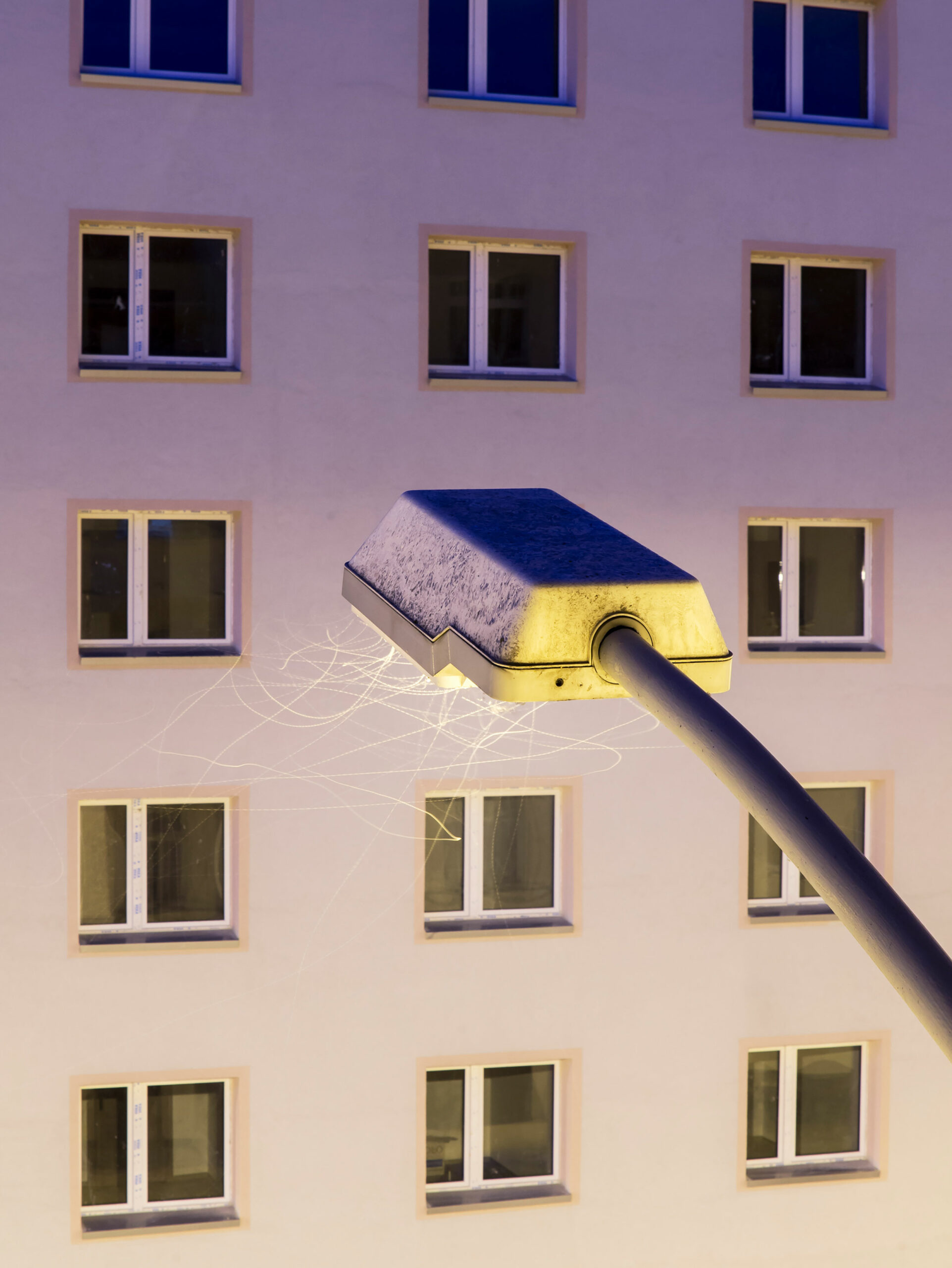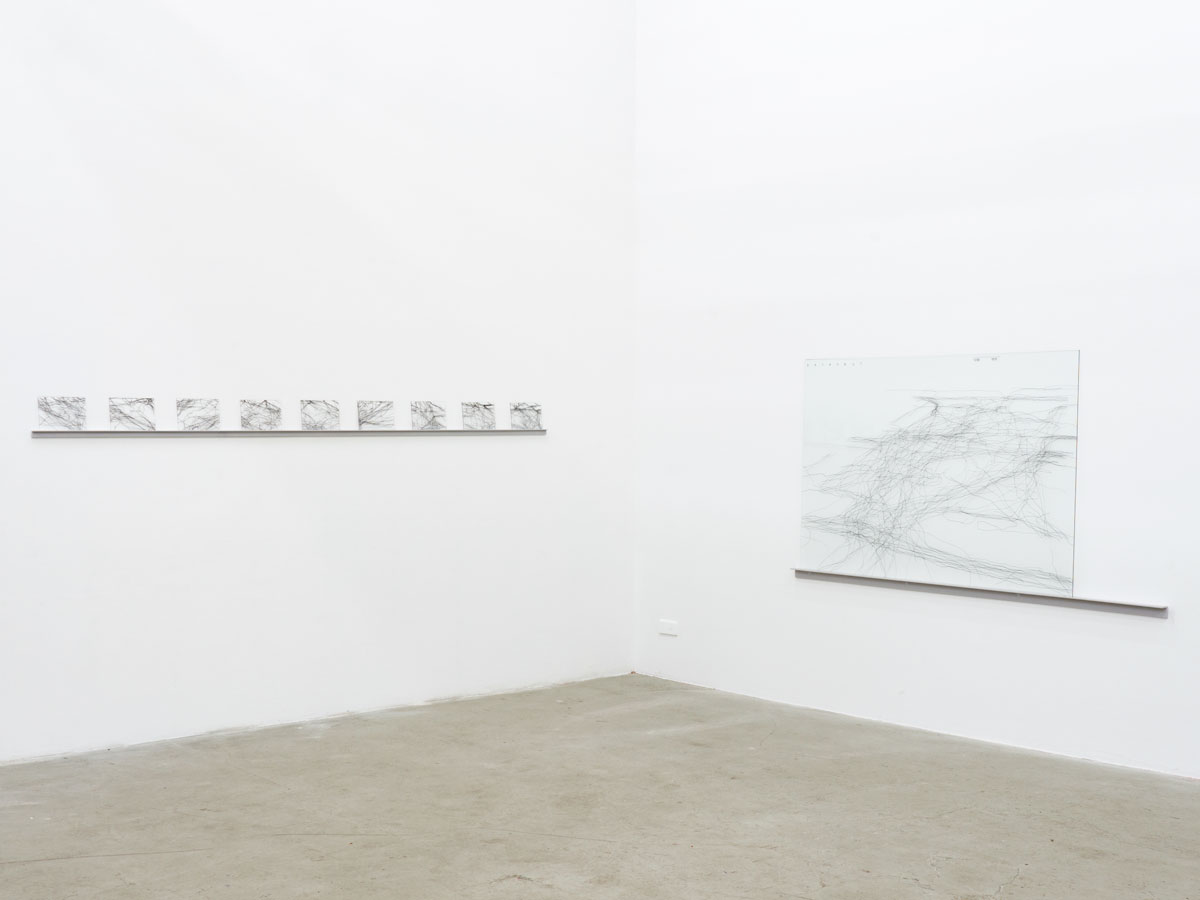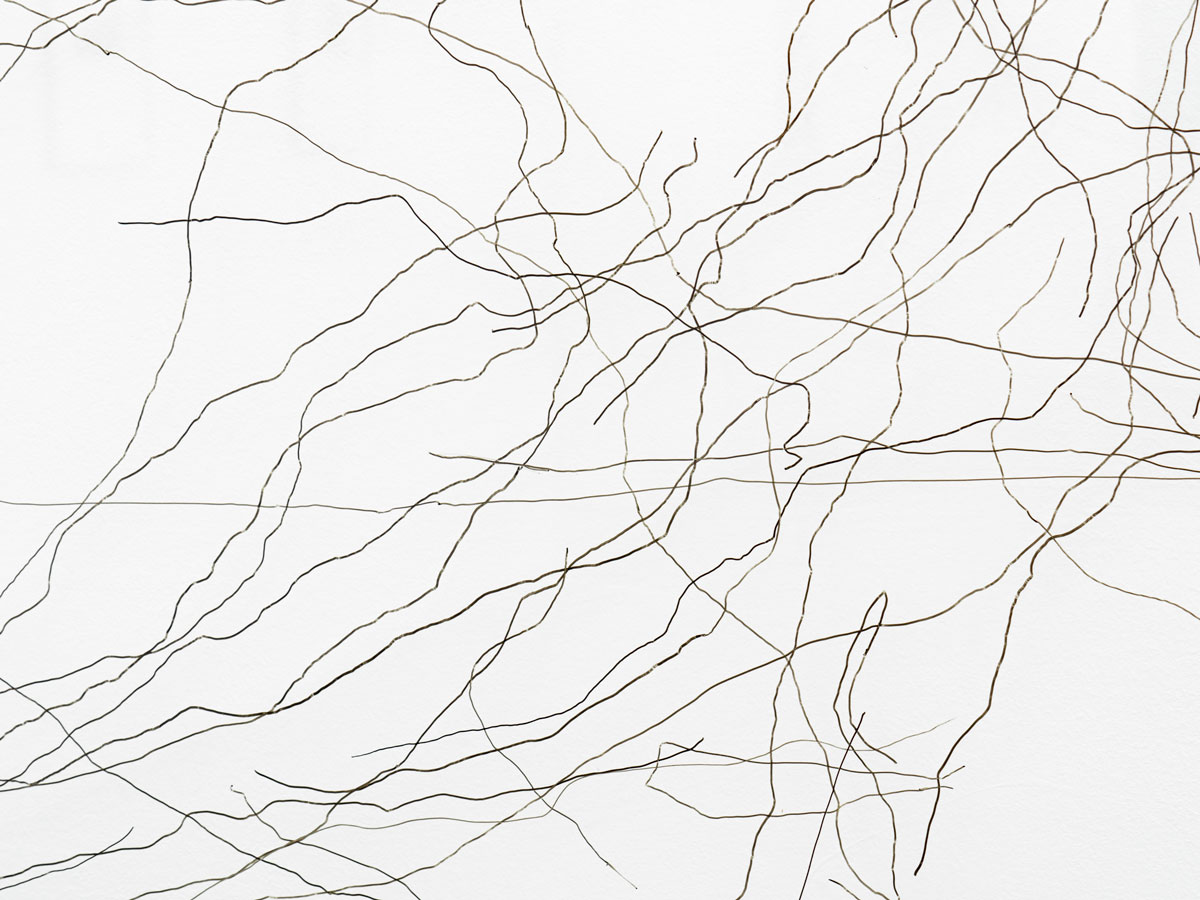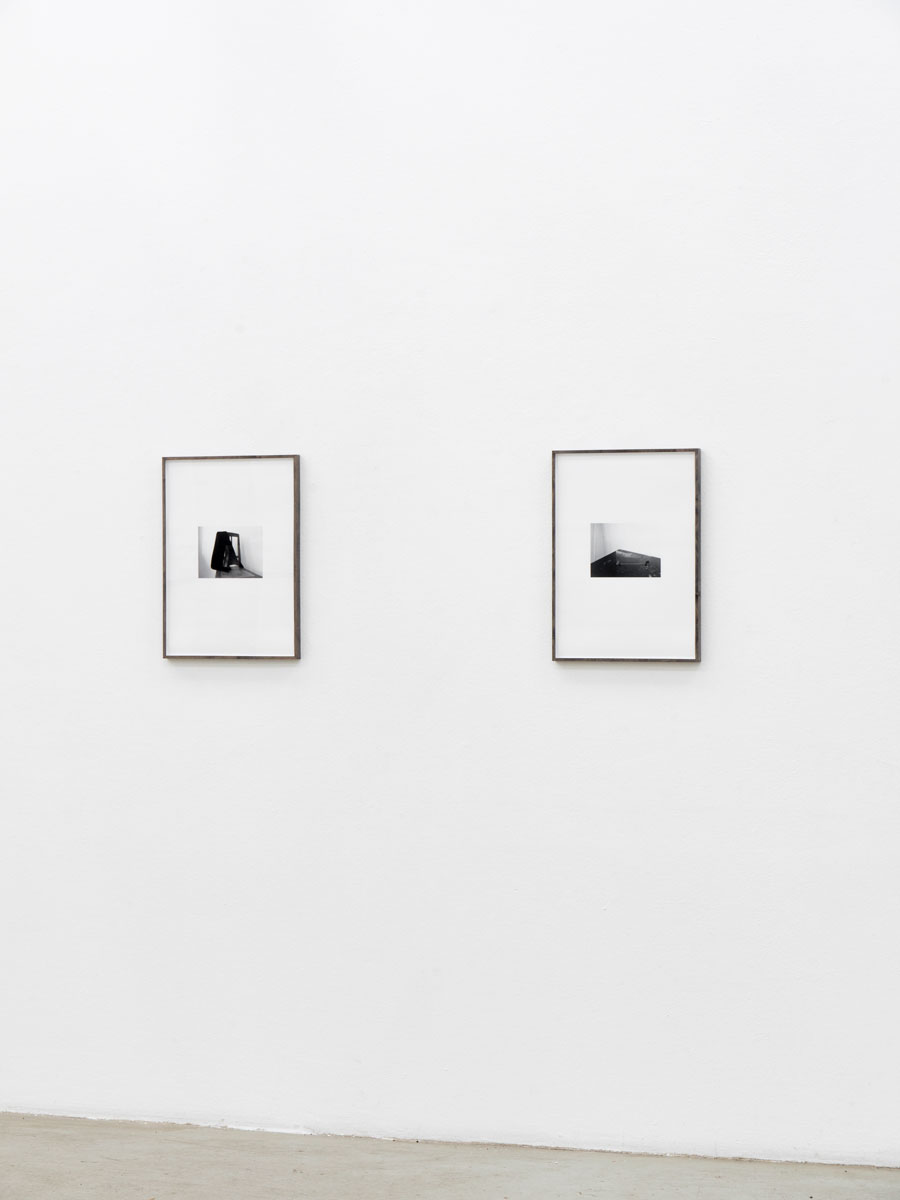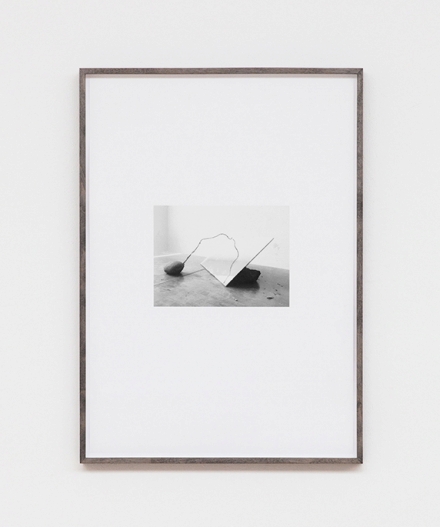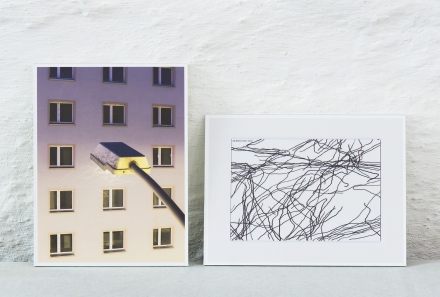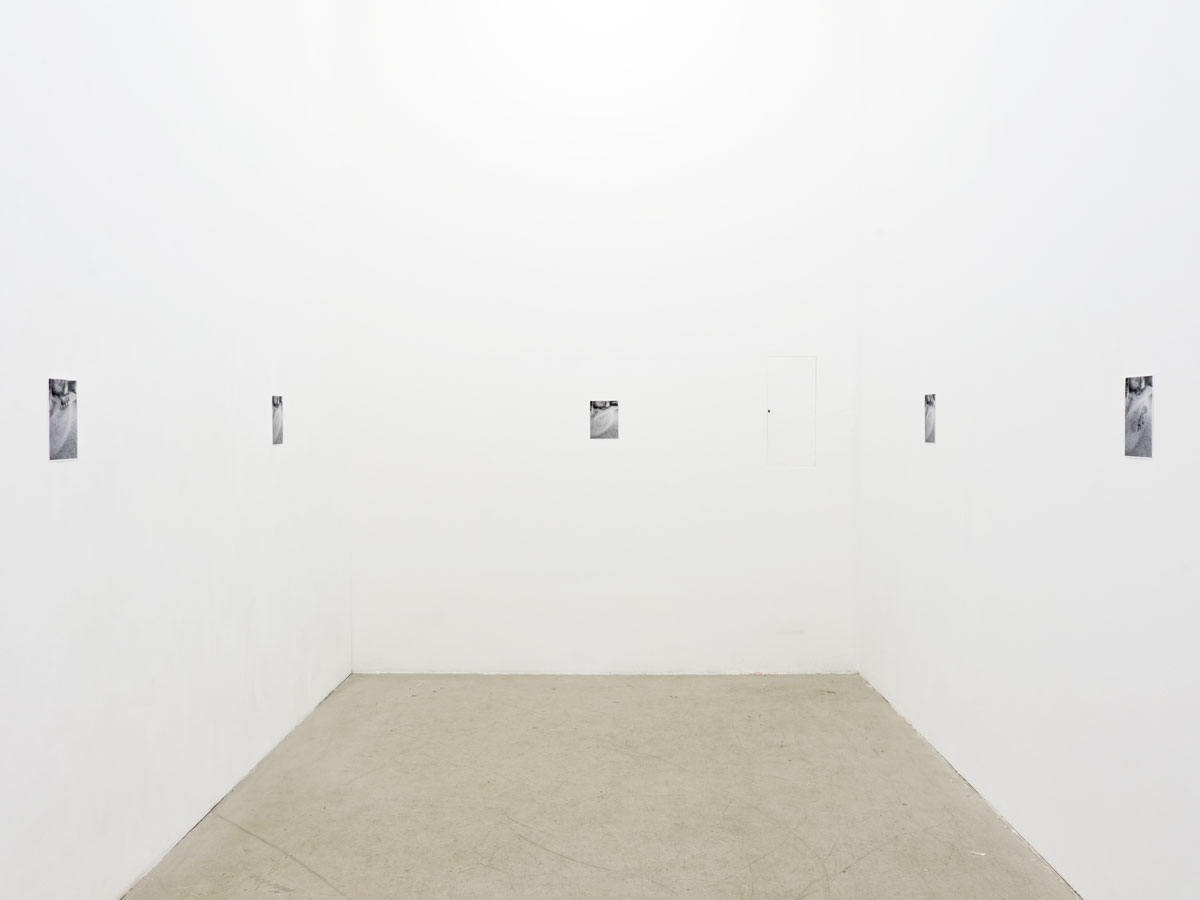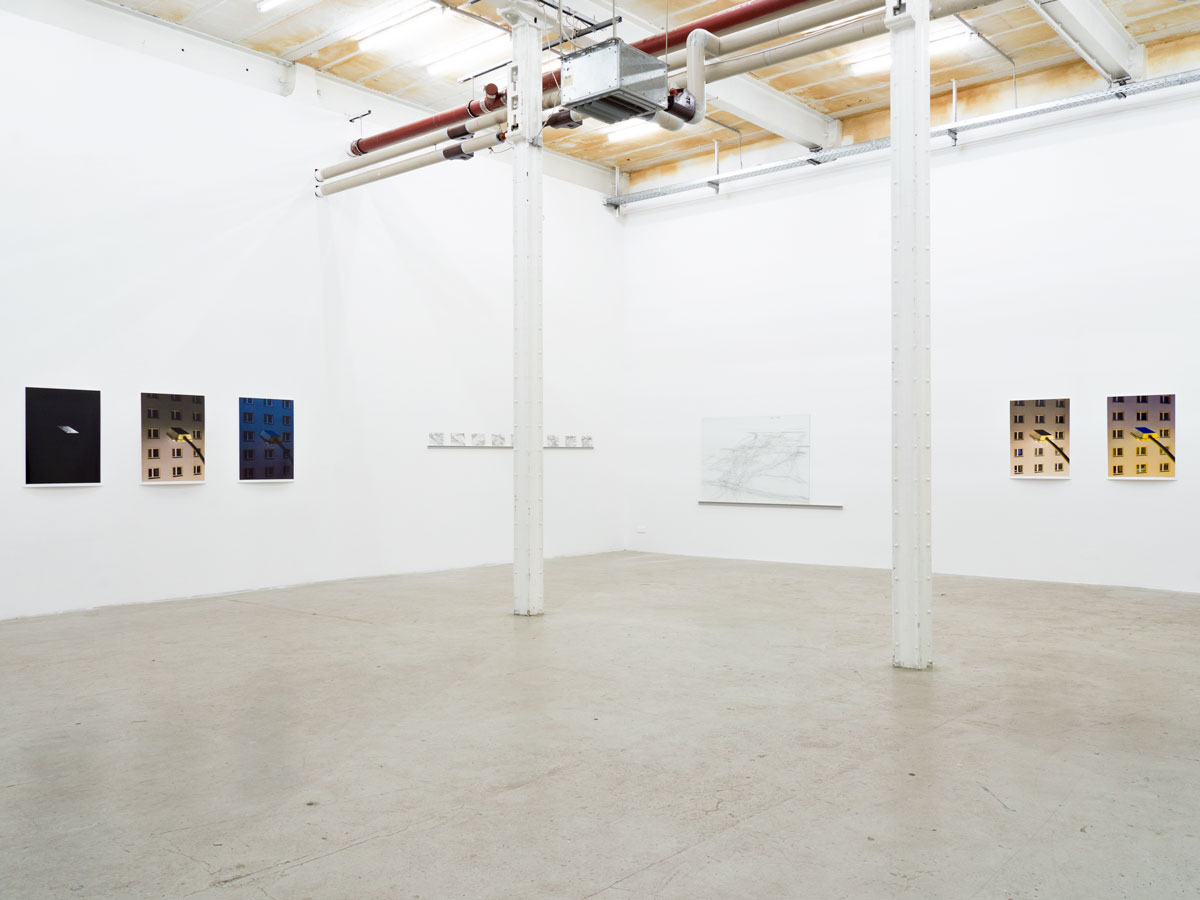
Die liegende Acht
“Infinity“ — the symbol, not the word, forms the title of Anna Vovan and Hayahisa Tomiyasu’s joint exhibition at Gallery b2. The shape of a lazy eight alludes to both a formal representation of endless motion and the semiotic capacity of signs in general. Both of these aspects resurface in the different works exhibited by the artists. With photography merely as a point of departure, both artists have expanded a more rigid and technical definition of the medium into the realm of “the photographic“. The boundaries of pictorial and iconographic reference — which often restrict the definition of photography to that of a representational medium — are greatly expanded upon in this post-medial approach which produces works that are affirmative of this widened definition: imprints and reprints, processual trace material, or the transformation and manipulation of light to make drawings. The more permissive and permeable concept of “the photographic“ allows for a poetic and semiotic ambiguity. Beneath the seemingly glossy and smooth surface of the photographic print, Vovan and Tomiyasu embrace ambivalence and the unfolding of multiple layers of meaning.
As much as the artists’ various perspectives and observational angles are a testament to their shared embrace of “the photographic“, their practices are neither congruent nor similar. Tomiyasu’s approach is one of serial or sequential documentation. With persistence, intuition, and situational awareness he captures moments that not only encapsulate societal realities, but also refer to something beyond themselves; to time and space outside of what is depicted. Vovan, on the other hand, (de)constructs photography or the “creative“ moment of recording. The passage of time, to her, is a focal point. Locus and space are specified, but not excessively outlined beyond the essential.
On a visit to the zoo, Tomiyasu noticed a path treaded by a rhinoceros in its habitat. A series of eight small black and white photo-prints (∞, 2018) invites the viewer to contemplate the pattern the rhinoceros has carved into the ground: is what we see pure coincidence; simple chance? Does the animal unwittingly and instinctively communicate with its spectators? Is this a form of silent protest against the narrow confines of its enclosure manifested by the stoic pursuit of the symbolic path of infinity? The quality of the work is not grounded in the provision of definitive answers or the conception of a critique. Rather, there is a sense of wonderment at the philosophical dimension and depth of the ordinary. Were we to be attentive and observant, we may feel incentivized to ponder the dualism of our own mammalian nature. In his work NA T 250 LR (2016–2017) Tomiyasu follows a different premise. This time, the subject of serial artistic inquiry is the seemingly abstract head of a street lamp. The backdrop we see is static: the facade of a high-rise building. Time of day, lighting, and exposure, however, are variable. Both the lamp and facade appear standardized and generic. Thus the photographic aesthetic remains austere and crisp throughout the series. The incessant flickering shimmer of snowflakes or of mosquitos performing a dance in the light are some of the variables that defy prediction within the set parameters. Tomiyasu very matter-of-factly juxtaposes his photographic records of these diagrams of motion with the conventional human creative act that underlies design, architecture and photography.
Anna Vovan’s Webcam-Drawings (2018), based on a previous project where the artist tracked pedestrians in public spaces in real time, have developed into a complex reflection on surveillance media in the 21st century. Via the internet she accesses webcams recording public spaces all over the world and projects the live footage onto glass panels in her studio in Leipzig. There is an inherent controversy underlying this approach. Should a public space really be recorded through a webcam in the first place? What happens if the image is introduced into a space so inconceivably remote and divorced from the actual events; the studio of the artist? To what extent has mobility become an integral component of artistic practice in the 21st century? In what appears to be an attempt to try to undermine the purpose of surveillance media tracking through absurdity, Vovan traces the movements of pedestrians cutting through this stage comprised of local architecture on her glass panel. All that remains are traces. The resulting abstract image is, to a large extent, beyond Vovan’s control and creative vision. It adds as much information about time and space as it subtracts out of this apparent equation. Once more, the patterns generated by the commonplace and the ordinary progression of life shift into focus. By recording those patterns, Vovan charts the uncertain territory between interdependence and chance. The staged installations in the series Untitled (2016–) appear to be specifically tailored toward contemplation. The viewer sees a situational construct in which objects, reflective surfaces (mirrors), and surrounding space multiply each other to constitute a photograph and allow a multi-layered reflection. Like quick sketches in a notebook that are still carefully arranged, they re-route and command the viewer from the observational starting point to a larger question: how do we experience infinity given our limited lifetime and space?
When presented in contrast, the works of Vovan and Tomiyasu highlight and strengthen each other, helping the viewer to get a clear, unobstructed grasp of the artists’ individual positions. The artists center — even as they eliminate people as pictorial elements in the images they produce — their observations on the interdependence of social reality, the usage and the design of environments. Through the inclusion of ultimately indeterminable variables, such as the movements of animals and people, both Vovan and Tomiyasu cleverly outsource, divide, and playfully undermine their functions as — and positions of — artists, creators, and authors.
Gabrielle Schaad (im Juni 2018), Translation / Übersetzung: Lukas Holldorf & Katie Krol

